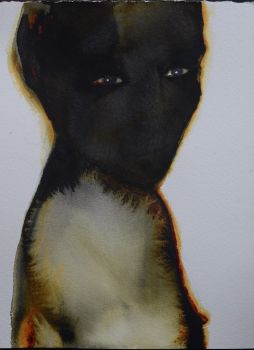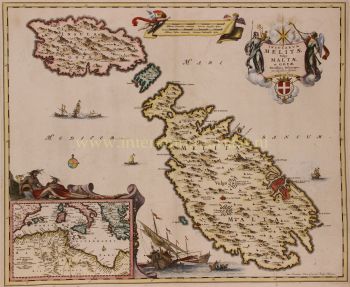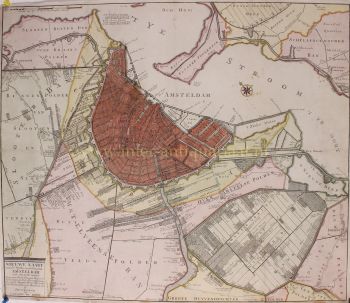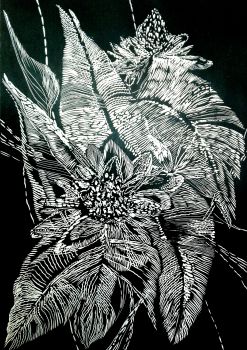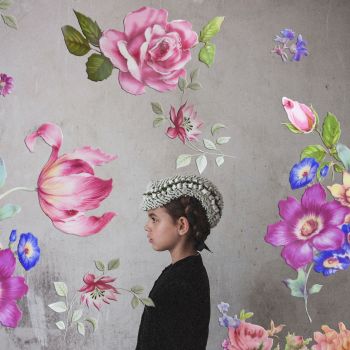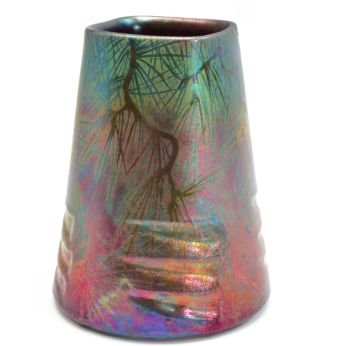Dutch hyacinth 1799 - 1801
Gerard van Spaendonck
PapierAfdrukken
50 ⨯ 33 cm
€ 1.250
Inter-Antiquariaat Mefferdt & De Jonge
- Over kunstwerk“Jacinthe double - Hyacinthus orientalis”, stipple engraving made by P.F. le Grand after a drawing by Gerard(us) van Spaendonck from the "Fleurs dessinées d'après nature", published between 1799 and 1801. With original hand colouring. Size (print) approx. 50 x 33 cm. In Greek mythology, Hyacinth was a very beautiful Spartan prince and lover of the god Apollo. Hyacinth was also admired by the God of the West wind Zephyrus. But Hyacinth chose Apollo. With Apollo, Hyacinth visited all of Apollo's sacred lands in the chariot drawn by swans. Apollo taught his lover the use of the bow, of music and the lyre, the art of prophecy, and exercises in the gymnasium. One day, Apollo was teaching him the game of quoit. They decided to have a friendly competition by taking turns to throw the discus. Apollo threw first, with such a strength that the discus slit the clouds in the sky. Hyacinth ran behind it to catch it and impress Apollo, but as the discus hit the ground, it bounced back, hitting Hyacinth's head and wounding him fatally. Alternatively, Zephyrus is held responsible for the death of Hyacinth; jealous that Hyacinth preferred the radiant Apollo, Zephyrus blew Apollo's quoit boisterously off course to kill Hyacinth. Apollo's face turned pale as he held his dying lover in his arms. He used all his medicinal skills and even tried giving ambrosia to heal Hyacinth's wound, but in vain, for he could not cure the wound. When Hyacinth died, Apollo wept, blaming himself. He wished to become a mortal and join his lover in death. However, as that was not possible, Apollo promised that he would always remember Hyacinth in his songs and the music of his lyre. From Hyacinth's spilled blood, he created a flower, the hyacinth, and on its petals inscribed the words of despair, "AI AI" – "alas" Gerard van Spaendonck (1756-1842) studied with decorative painter Willem Jacob Herreyns in Antwerp. In 1769 he moved to Paris, where in 1774 he was appointed miniature painter in the court of Louis XVI. In 1780 he succeeded Madeleine Françoise Basseporte as professor of floral painting at the Jardin des Plantes, and was elected a member of the Académie des beaux-arts shortly afterwards. Van Spaendonck contributed to over fifty works of Les Vélins du Roi, a famous collection of botanical watercolours owned by French royalty. From 1799 to 1801 he published twenty-four plates as part of his Fleurs Dessinees d'apres Nature (Flowers Drawn from Life), which were high-quality engravings for students of floral painting. Today the Fleurs Dessinees d'apres Nature are considered among the best botanical engravings in the world. Stipple engravings with which one is able to differentiate between different tones of gray, turned out to be highly suitable for depicting botanical details, a method that Van Spaendonck also taught his pupil Pierre-Joseph Redouté. Like other famous flower painters, Van Spaendonck was also technically perfect: in oil, watercolour, pen or pencil, on any scale. With attention to every minute detail and elegance and sophistication of the composition, he shows his mastery. Like Jan van Huysum, Van Spaendonck understood the zeitgeist and created flower compositions that matched the taste of the public of around 1800. He combined the traditional Dutch way of representing flowers with French sophistication and good taste. Price: Euro 1.250,-
- Over kunstenaar
Gerard was een oudere broer van Cornelis van Spaendonck (1756-1840), die eveneens een bekend schilder was. In de jaren 1760-1769 studeerde hij in Antwerpen bij de decoratieschilder Willem Herreyns. In 1769 verhuisde hij naar Parijs, en in 1774 werd hij dankzij bemiddeling door Claude-Henri Watelet op 28-jarige leeftijd tot miniatuurschilder aan het hof van Lodewijk XVI benoemd. Hij exposeerde voor het eerst in 1777. In 1780 volgde hij Françoise Basseporte (1701-1780) op als hoogleraar bloemschilderen aan de Jardin des Plantes. Kort daarop werd hij gekozen tot lid van de Académie des beaux-arts.
Van Spaendonck schilderde zowel in olieverf als aquarel. Hij maakte meer dan vijftig werken voor de Vélins du Roi, een befaamde collectie botanische aquarellen in het bezit van de Franse koninklijke familie. Van 1799 tot 1801 publiceerde hij 24 platen van zijn Fleurs Dessinées d'après Nature (Bloemen getekend naar het leven); gravures voor studenten bloemschilderen van hoge kwaliteit. Tegenwoordig is Fleurs dessinées d'après nature een hoog aangeslagen boek op het gebied van bloemschilderen.
In 1788 werd Van Spaendonck benoemd tot adviseur van de Académie, en in 1795 was hij een der oprichters van het Institut de France. In 1804 kreeg hij het Legioen van Eer. Kort daarop werd hij door Napoleon Bonaparte in de adelstand verheven. Van Spaendonck overleed in 1822 op 76-jarige leeftijd.
Op Groeseindstraat 99 in Tilburg is een plaquette te zien waar voorheen het geboortehuis van de gebroeders van Spaendonck heeft gestaan. Gerard van Spaendonck is naast schilder Karel Appel de enige Nederlander die op Père Lachaise in Parijs ligt begraven. Gerard ligt pal achter het graf van Chopin.
Bent u geïnteresseerd om dit kunstwerk te kopen?
Artwork details
Related artworks
- 1 - 1 / 1
- 1 - 4 / 24
- 1 - 4 / 24
Abraham Salm
Twenty-four chromolithographs of Java after A. Salm”1801 - 1876
Prijs op aanvraagZebregs & Röell - Fine Art - Antiques
1 - 4 / 24- 1 - 4 / 12













